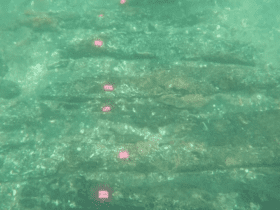Grand Theft Auto fans, brace yourselves. The internet sleuths have struck again, uncovering juicy new details about GTA 6—the long-anticipated installment in Rockstar’s crown jewel series. This time, the revelations come from the LinkedIn profile of Ryan Woods, a Rockstar Games principal engine programmer. Yes, LinkedIn: where job-hunters network and gamers mine nuggets of insider information.
The discovery, initially spotlighted on the r/GTA6 subreddit, gives a sneak peek into some game-changing (pun intended) tech Rockstar appears to be cooking up for the GTA 6 engine. Woods’ profile, pre-edit, detailed his role in optimizing Rockstar’s proprietary RAGE engine with some tantalizing advancements. Let’s dive into what makes this potential glimpse so intriguing.
Procedural Generation: Making the World Feel Truly Alive
The phrase “procedural generation” caught everyone’s attention. Sure, it’s not a brand-new concept—Minecraft’s blocks and No Man’s Sky’s galaxies come to mind—but in Rockstar’s hands, it could redefine how we experience open worlds. Imagine a GTA city where no two corners feel identical, where clutter on the streets, graffiti on walls, and even trees in parks look slightly different every time you play. Woods’ profile hints at procedural tech possibly being used to generate objects and environments dynamically. This doesn’t mean every skyscraper will suddenly “spawn in,” but subtle touches—like varied placement of props or small decorative details—could inject realism and break the monotony of copy-pasted assets.
What makes this noteworthy is Rockstar’s obsessive attention to detail. Think back to Red Dead Redemption 2, where even NPC routines felt handcrafted. If procedural generation allows for small-scale variation, it could enhance immersion without sacrificing that carefully curated Rockstar polish. Essentially, your GTA playground could look just as chaotic and unpredictable as real life.
Ray-Tracing and Advanced Lighting
Another nugget from Woods’ pre-edited profile was the mention of ray-tracing. If you’re unfamiliar, ray-tracing simulates the way light interacts with objects to create stunningly realistic reflections and shadows. It’s the tech responsible for those jaw-dropping visuals in games like Cyberpunk 2077 and Control. Imagine neon-lit nights in Vice City (yes, we’re all assuming the game’s setting) where puddles reflect glowing billboards and passing headlights shimmer with lifelike brilliance. If Rockstar nails this, it could make GTA 6 the most visually striking game of its generation.
What’s Missing from the Updated Profile?
In true Rockstar fashion, Woods’ LinkedIn profile now displays a watered-down version of his job description, nixing any mentions of procedural generation, ray-tracing, or even the RAGE engine. It’s classic damage control—a strategy almost as iconic as GTA’s pay-and-spray mechanic. But even the revised description still boasts about integrating “cutting-edge technologies” and “pushing technical boundaries.” It’s vague, yes, but undeniably tantalizing.
Fans are now connecting the dots between this LinkedIn discovery and Rockstar’s earlier promise of “mind-blowing things” for their next game. Combine this with recent hints about NPC behavior and dynamic weather systems, and it’s clear that Rockstar is aiming to create an open world that feels alive in ways we’ve never experienced before.
While we wait for the next GTA 6 trailer or official update, this small breadcrumb of tech talk is enough to fuel endless speculation. Will procedural generation change the way we interact with the world? Could ray-tracing make Vice City nights even more vibrant? One thing’s for sure—Rockstar’s playing the long game, and it seems poised to deliver something truly groundbreaking.












Leave a Reply